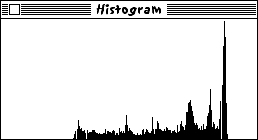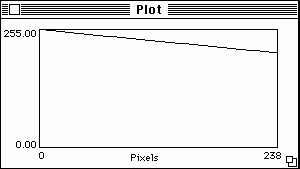< |
Lazy Lighting |
> |
|||||||||
|
|
|
INTRODUCTIONLazy lighting is used to correct uneven brightness of micrographs caused by uneven lighting conditions in the optical microscope. Basis for the correction is the assumption that the average brighntess of the micrograph should be the same everywhere.
Lazy Lighting works both with Image SXM and NIH Image
The micrographs shown above
(Black Hills quartzite, circular polarization) are
examples of oblique lighting with brightness
decreasing from left to right (a) and uneven
brightness with a brighter part near the center and
dark rims (b).
|
||||||||
|
|
|
GETTING STARTEDThe object of this set of macros is to correct uneven background illumination.
|
||||||||
|
|
|
BACKGROUND CORRECTION
Two types of uneven lighting
can be corrected:
The first type is corrected
by subtracting a horizontal or vertical ramp
function from the image, the second typ is
corrected by subtracting a horizontal and vertical
"roof" function whose gables cross cut at the
center of the bright spot.
|
||||||||
|
|
|
EXAMPLE OF RAMP CORRECTION
The ramp correction yields
homogeneous brightness, but not necessarily
homogeneous contrast. This due to the non-linearity
of the recording equipment which produces lower
contrast in the darker areas (see section
"correction of contrast").
|
||||||||
|
|
|
EXAMPLE OF ROOF CORRECTION
To correct the central
brightness a region of interest, ROI, of 1/3 image
width by 1/3 image height (1/9 of image area) is
manually placed over the brightest part of the
image, the brightest part being determined by
visual inspection. The histogram of this area is
calculated.
|
||||||||
|
|
|
CORRECTION OF CONTRAST
The problem of contrast
inhomogeneity can be overcome if the initial image
is corrected for the camera non-linearity (this
requires the calibration of the camera). The
calibration of the camera yields a look-up-table
(LUT) which is used to linearize the
image.
|
||||||||
|
|
|
|
||||||||
|
|
|
COMPARISON
Ramp correction with and without camera correction
|
||||||||
|
|
|
Roof correction with and without camera correction
|
||||||||







 >
>




















